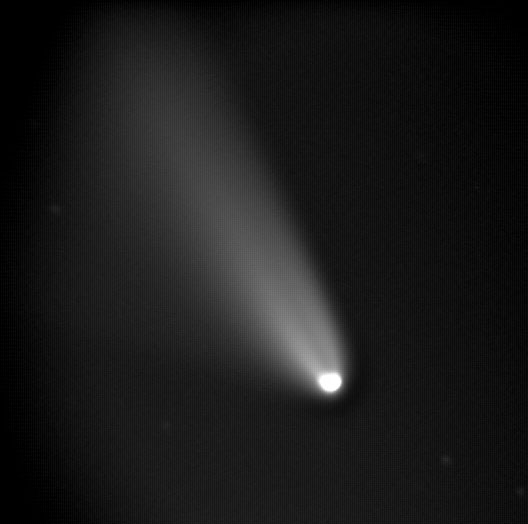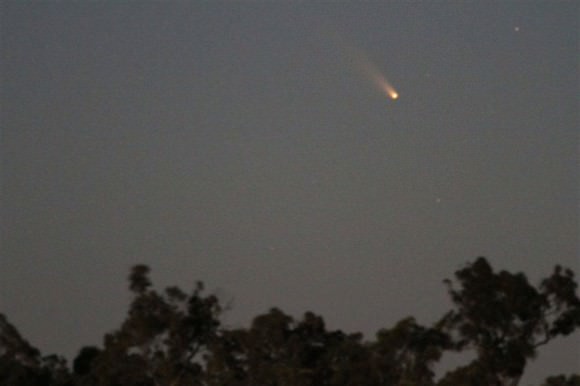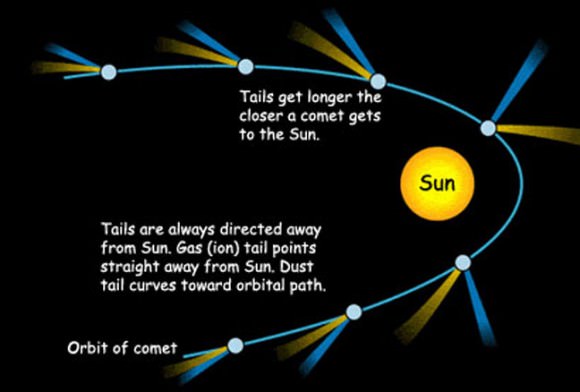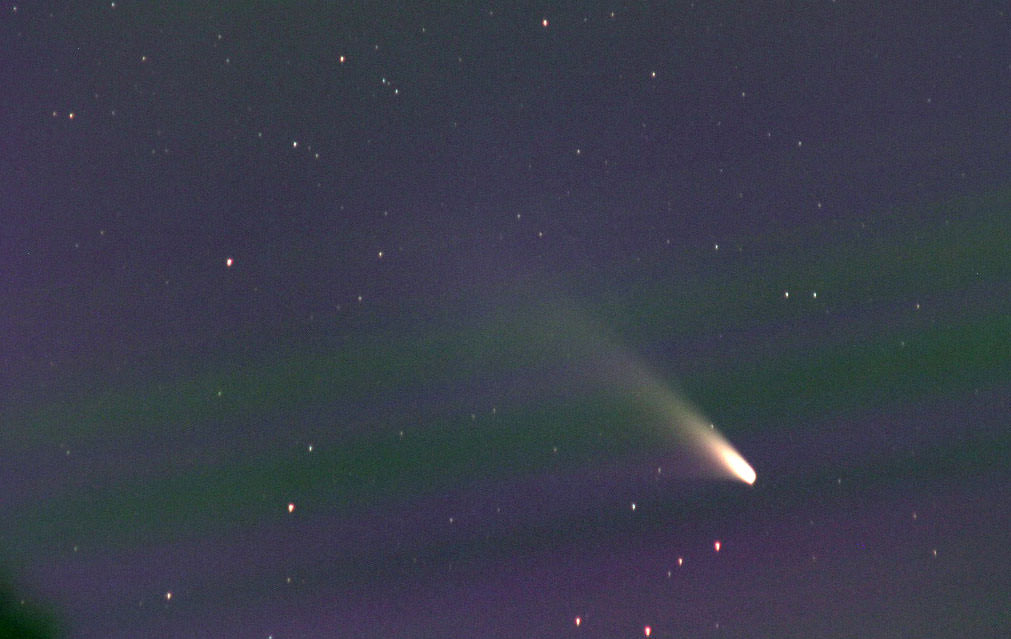Brand new photos from amateur astronomers Michael Mattiazzo and Jim Gifford, both of Australia show the current view of Comet C/2011 L4 PANSTARRS down under, and gives sky watchers in the northern hemisphere hope for great views of in little more than a week. The comet has been brightening steadily and now shines around magnitude 2.6, just a little fainter than the stars of the Big Dipper. More images below:

On February 28, Mattiazzo spotted the comet and a small portion of its dust tail in evening twilight 6 degrees above the western horizon. Using large binoculars he could trace the tail to 1.5 degrees or three lunar diameters. PANSTARRS also has a second fainter dust tail, called a Type III tail, composed of heavier dust particles, dimly visible in the photo below alongside the brighter Type II tail.

A third ion tail, while not currently visible with the naked eye, shows up well in photographs. Dust tails form when the heat of the sun vaporizes dust-laden ices in the comet’s nucleus; solar photons – literally light itself – gently pushes the dust away from the comet’s head into a long, beautiful tail. Gases like carbon monoxide and cyanogen, which are normally neutral, get their energy levels pumped up by the sun’s ultraviolet light, shed their outer electrons and become “ionized.” The same UV light causes the gases to fluoresce a pale blue.
Additional info: Comet PanSTARRS: How to See it in March 2013

Dust tails generally follow the comet’s curving orbit and assume the shape of a gently-curved arc; ion tails are straight as a stick and point directly away from the sun. Once carbon monoxide molecules have been ionized, they’re susceptible to the magnetic force that flows from the sun as part of the solar wind. The wind with its entrained solar magnetism sweeps by the comet at some 300 miles per second (500 km/sec.) and blows the ion tail straight back exactly opposite the Sun.
With PANSTARRS sprouting tails right and left and peak brightness predictions still around magnitude 1 or 2, get ready for this herald of the new season.
Here’s bascially a naked-eye view of PANSTARRS, taken by Dave Curtis on February 22, 2013 from Dunedin, New Zealand. “The comet was just visible with the naked eye in the twilight,” Dave said. It was taken with a Canon 5D3 and a 70-200mm lens at 70mm:



For thousands of years, comets have been interpreted as harbingers of change. No doubt, to many cultures they still are.
I can’t help but notice how the timing, and the hemispheric visibility of this natural event relates to things going on in Italy right now. If I were religious, a catholic, and more to the point a superstitious person, I would probably be considering the movement of this “harbinger” from the South toward the North to be a sign.
All that being said, I am definitely hoping for some clear nights in the Seattle area in the coming weeks. I would very much love to see this comet. I miss the crystal clear winter skies that I used to see when I lived in Montana. I wish I had appreciated them more at the time.
After the 2012 fiasco, only really dumb people would still think that this is a sign.
True, and I in no way was suggesting that it was. My wife had the morning blather on, they were covering the Pope retiting when I wrote that. It occurred to me then that if you combined the faithful (which I am not) and the gullible (which I am not) you could probably convince a reasonably large number of people that it WAS a sign though. Especially given the timing.